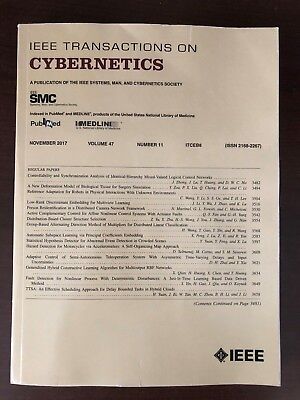Local Regularity Model for Multimodal Multiobjective Optimization.
IF 10.5
1区 计算机科学
Q1 AUTOMATION & CONTROL SYSTEMS
引用次数: 0
Abstract
Multimodal multiobjective optimization aims to provide diversified acceptable decisions (ADs), including GOS with consistent objective evaluations and local optimal solutions (LOSs) with acceptable objective evaluations. However, the discrimination of LOSs highly depends on the distribution of candidate solutions, which may result in the catastrophic elimination of LOSs to damage the diversity in the decision space. To address this problem, a local regularity model (LRM) method is proposed to improve the distribution of candidate solutions. There are three novelties of LRM. First, a HPCA is developed to extract principal components for different nondominated sets. Then, the distribution features of different nondominated sets are described in segments by a small number of candidate solutions to construct LRM. Second, a self-organization strategy, based on the feature correlation and neighborhood violation analysis, is proposed to improve local fitting ability. Then, LRM are efficiently constructed to estimate the manifold of ADs. Third, a probability reproduction strategy is developed to reconstruct the population by LRM. Then, the population is reconstructed to enhance the distribution of candidate solutions in the decision space. Finally, the proposed optimization method is integrated into the popular multimodal MMOA to demonstrate its effectiveness in terms of the benchmark multimodal MMOP test suite.多模态多目标优化的局部正则性模型。
多模态多目标优化旨在提供多种可接受决策(ADs),包括具有一致目标评价的GOS和具有可接受目标评价的局部最优解(LOSs)。然而,LOSs的判别高度依赖于候选解的分布,这可能导致LOSs的灾难性消除,从而损害决策空间的多样性。为了解决这一问题,提出了一种局部正则性模型(LRM)方法来改善候选解的分布。LRM有三个新颖之处。首先,提出了一种基于主成分分析的非支配集主成分提取方法。然后,用少量候选解在段内描述不同非支配集的分布特征,构造LRM。其次,提出了一种基于特征关联和邻域违反分析的自组织策略来提高局部拟合能力;然后,构造LRM来估计ad流形;第三,提出了一种概率复制策略,利用LRM来重建种群。然后对总体进行重构,增强候选解在决策空间中的分布。最后,将所提出的优化方法集成到当前流行的多模态MMOA中,通过多模态MMOA基准测试套件验证了其有效性。
本文章由计算机程序翻译,如有差异,请以英文原文为准。
求助全文
约1分钟内获得全文
求助全文
来源期刊

IEEE Transactions on Cybernetics
COMPUTER SCIENCE, ARTIFICIAL INTELLIGENCE-COMPUTER SCIENCE, CYBERNETICS
CiteScore
25.40
自引率
11.00%
发文量
1869
期刊介绍:
The scope of the IEEE Transactions on Cybernetics includes computational approaches to the field of cybernetics. Specifically, the transactions welcomes papers on communication and control across machines or machine, human, and organizations. The scope includes such areas as computational intelligence, computer vision, neural networks, genetic algorithms, machine learning, fuzzy systems, cognitive systems, decision making, and robotics, to the extent that they contribute to the theme of cybernetics or demonstrate an application of cybernetics principles.
 求助内容:
求助内容: 应助结果提醒方式:
应助结果提醒方式:


